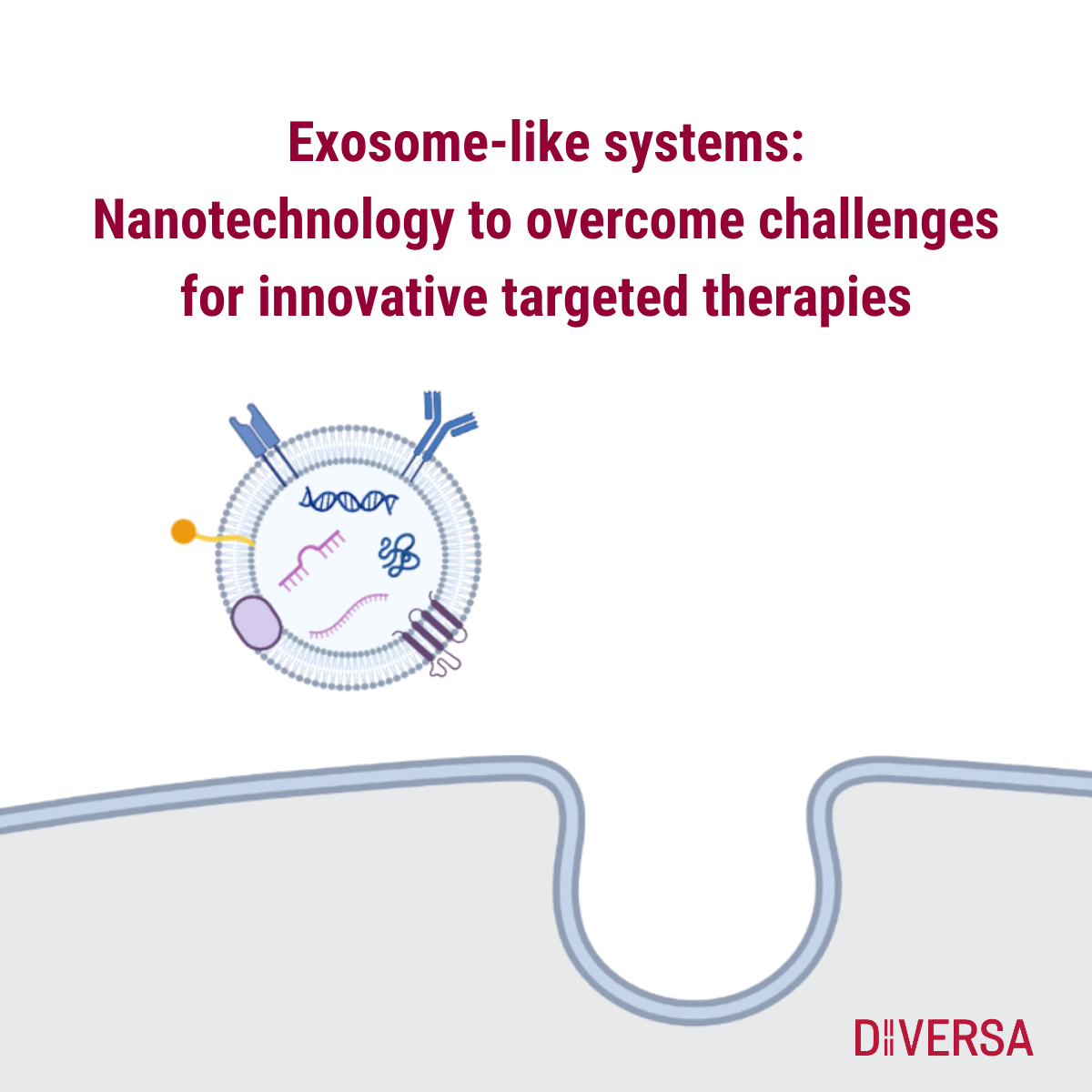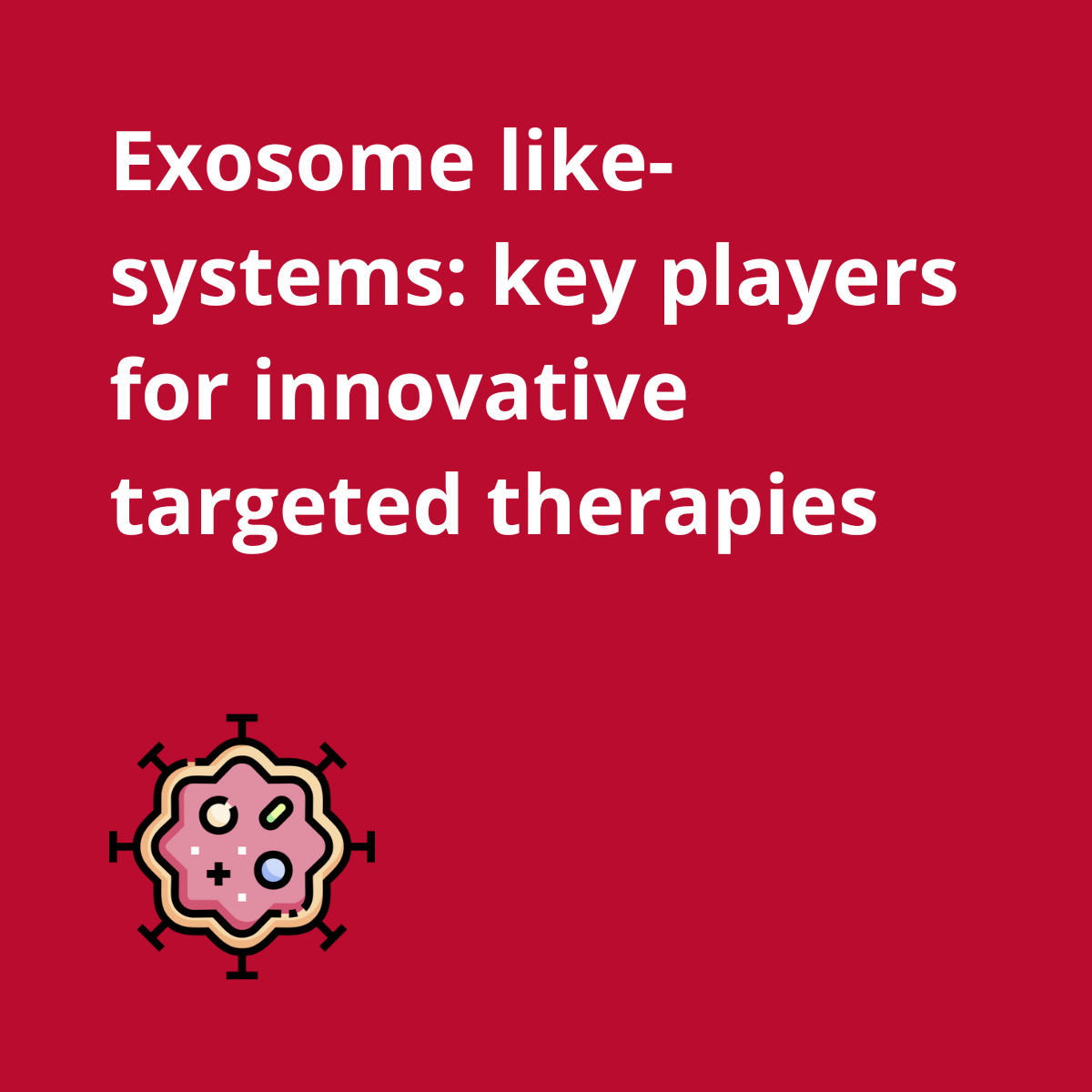Exosomes, subcellular structures that act as specific carriers for transferring genetic material and information between cells, demonstrate the potential to become significant players in targeted drug delivery and personalized medicine. Their tumor-homing properties and ability to cross biological barriers are among the factors contributing to this potential. This opens new avenues for the development of innovative treatments.
Nevertheless, the need for massive production for human therapies, low isolation yields from biological media or cell cultures, difficulties in modification, poor drug loading, short storage stability, and concerns regarding their safety for therapeutic purposes present strong barriers to exosome translation from bench to bedside difficult.
Once more, nanotechnology emerges as an alternative to solve these hurdles. Bioinspired carriers such as lipidic and hybrid nanosystems promise to overcome exosome limitations. They can be engineered to mimic key properties essential for targeted drug delivery.
García-Fernández and De La Fuente Freire reflect on the potential of exosome-like systems to overcome challenges for targeted cancer therapies in a compelling review article.
Exosome-like systems: the alternative to enhance cancer therapeutics
Exosome-like systems represent transformative nanotechnology to address crucial challenges in targeted cancer therapies, offering precision drug delivery and intercellular communication for enhanced treatment efficacy. They can be divided into two main categories:
- Engineered exosomes. Natural exosomes are isolated, purified, and modified to improve drug loading and targeting. Surface engineering modifications are proposed to enhance stability and improve pharmacokinetic and biodistribution profiles.
- Exosome mimetics, assembling lipids into a structure similar to the exosome and functionalizing the vesicle surface with proteins, encapsulating genetic material, or attaching hydrophilic molecules to increase blood circulation.
Exosome mimetic nanoparticles as drug delivery systems
Exosome mimetic nanoparticles are mostly proposed as drug delivery systems, and efficacy has been demonstrated in relevant animal models. Exosome-like systems have been tested to deliver chemical drugs and nucleic acids such as siRNA and mRNA.
Although not as prevalent, exosome-like systems have also been suggested as therapeutic agents that do not require additional cargo in immunotherapy. The nanoparticles are coated with specific ligands that activate and expand immune cells, which can fight against primary, metastatic, and relapsed tumors.
Exosome mimetic nanoparticles present many advantages over natural exosomes, mostly in terms of production and safety. Importantly, they can be surface decorated with targeting ligands for specific tissues or cell subpopulations.
DIVERSA’s lipid nanosystems: versatile exosome mimetic technology
DIVERSA’s R&D efforts have led to the development of innovative lipid nanoparticles that effectively deliver different types of cargo, including, as is the case for exosomes, proteins, and nucleic acids. With a mission to bridge the gap between bench research and clinical practice, DIVERSA aims to revolutionize therapeutics through nanotechnology.
Our lipid nanosystems offer numerous advantages to exosome-like systems. They exhibit exceptional stability in diverse biological fluids, high biocompatibility across various in vitro and in vivo models, along with a remarkable loading capacity. Importantly, their high versatility allows for surface decoration with a wide range of ligands, promoting targeted delivery to specific tissues and cell subpopulations.
DIVERSA provides lipid nanoparticles as ready-to-use reagents, similar in size to exosomes, enabling tailored delivery of small molecules, peptides, proteins, and nucleic acids such as mRNA, thus being at the forefront of therapy innovation.
Furthermore, our fluorescently labeled option, Fluogreen, enables tracking and analyzing nanoparticle interaction with cells and tissues and performs mechanistic studies. Other fluorescent options are also available upon request, providing flexibility to meet specific research needs.
Crucially, DIVERSA’s nanoparticles, through precise association with one or more proteins, RNAs, and even a combination of both upon request for a customized solution, offer invaluable tools for mechanistic studies. Their ease of handling enables and empowers researchers to validate specific exosome features with precision and flexibility, advancing understanding of exosome-mediated processes.
Do you want to know more about our technology?
Contact us or send an email to sales@diversatechnologies.com.


